‘Wear shoes, don’t bring weapons’: What to expect from the Lord of the Rings musical
This production – triggered by a funding crisis at a regional British theatre – tells JRR Tolkien’s story in a way audiences have not seen before. We take you behind the scenes on the eve of the Australian tour.
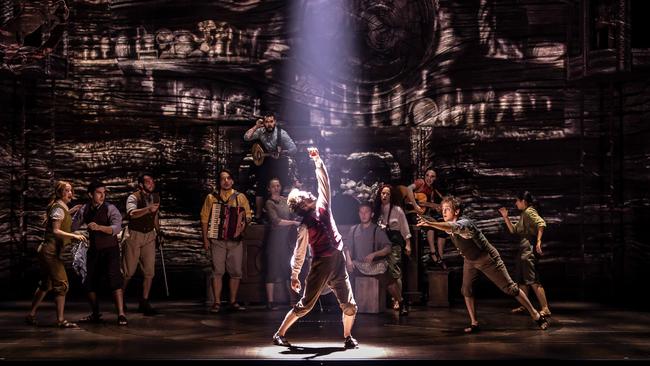
Two young women wearing medieval-style dresses with fitted bodices and full velvet skirts are sitting in a prestigious Chicago theatre with their elf ears on. As they watch the show playing out before them, these 20-somethings do not betray any trace of self-consciousness and their elfin features, inserted behind their real ears, look disconcertingly authentic, even oddly elegant.
A middle-aged couple turns up for the same performance in matching pantaloons, brightly coloured tights and vests; an elf, a wizard and a dwarf were seen haunting the stalls the night before.
The theatre management has printed written warnings aimed at other audience members who want to go the full immersion. No, we’re not talking about tiresome trigger warnings but guidelines for cosplay costumes. Theatre patrons are asked to “refrain from bringing any real or replica weapons” to the production and to choose costumes that do not “take up more than your seat space”. Then comes this reporter’s favourite guideline: “Although Hobbits don’t wear shoes, we ask that all our patrons do!”
On a balmy July night, Middle-earth has come to the Chicago Shakespeare Theatre on the shores of Lake Michigan, in the form of the reimagined musical The Lord of the Rings: A Musical Tale. While Lake Michigan is as placid as a pond on this windless summer evening, inside the Shakespeare Theatre complex, JRR Tolkien’s roiling fantasy worlds – featuring hobbits, elves, humans, orcs, dark riders and a super-sized spider – erupt on to the stage in a production that is part folk musical, part visual spectacle.
Since Tolkien’s The Fellowship of the Ring, the first volume in his adventure series The Lord of the Rings, was published 70 years ago, his high-fantasy tales with their folkloric, invented worlds, languages and creatures have evolved from a bestselling series of books into a globe-spanning cultural phenomenon.
The novels have been translated into 50 languages and sold 150 million copies. Spin-offs have ranged from video games to playing cards, a Lego set, a forthcoming anime film and, of course, Peter Jackson’s cinematic trilogy to rule them all, which garnered an astonishing 17 Academy awards. Season two of Prime Video’s lavish prequel, LOTR: The Rings of Power, begins on August 29.
In Chicago, Irish theatre producer Kevin Wallace tells Review that within this ever-expanding fantasy-verse there is “absolutely and definitely” an untapped audience for a revived stage musical – and in a reflection of this, LOTR: A Musical Tale will tour to Sydney in January, 2025.
This production – which was triggered by a funding crisis at a regional British theatre – tells Tolkien’s story in a way audiences have not seen before, Wallace explains. A co-producer of this upstart musical, in which the actors play their own instruments, he says: “This production is very commercial; it also has a very particular artistic flair.’’ He says “with the precision of a perfect Swiss clock (cast and crew) create the worlds we move through in the story so beautifully”.
Torben Brookman, an Australian co-producer of LOTR: A Musical Tale, has, like Wallace, flown into Illinois’ biggest city ahead of opening night, and two days out from the premiere he is feeling “excited” with an inevitable “element of apprehension”.
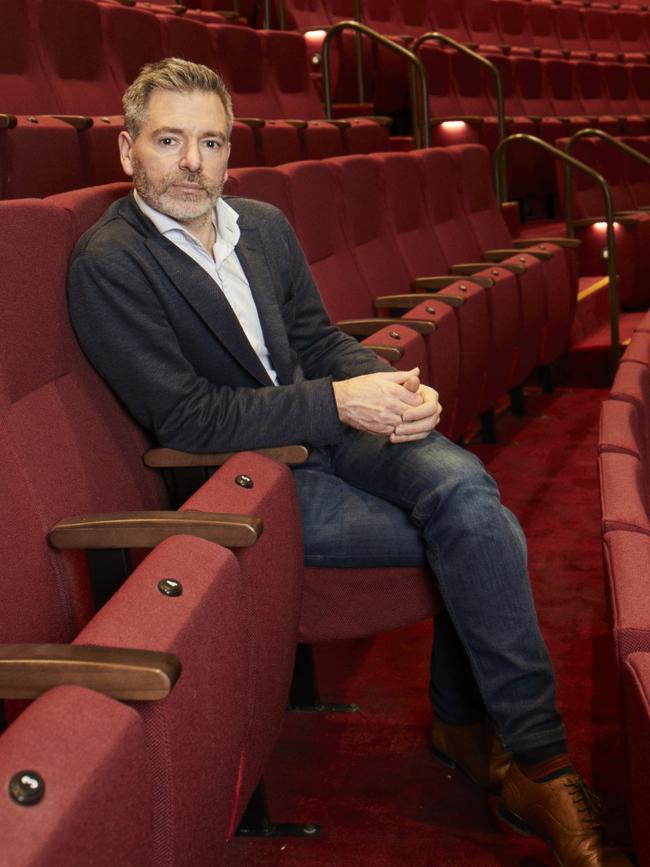
He reveals his British and Australian-based company, GWB Entertainment, had been seeking a LOTR deal for 10 years before it secured the rights to British director Paul Hart’s version, which tells Tolkien’s saga from the point of view of the hobbits, the small yet big-hearted folk who live in the sleepy Shire and undertake a perilous quest to save Middle-earth from the Dark Lord Sauron. Brookman hopes this show – which homes in on the perspective of reluctant hero Frodo (played by Spencer Davis Milford in Chicago) and his loyal friend Samwise Gamgee – will tour to other Australian cities and, indeed, the world.
GWB Entertainment’s national and international credits include the crowd-pleasing Sunset Boulevard, Matilda the Musical and Miss Saigon, and its shows have reached more than four million people across the past five years.
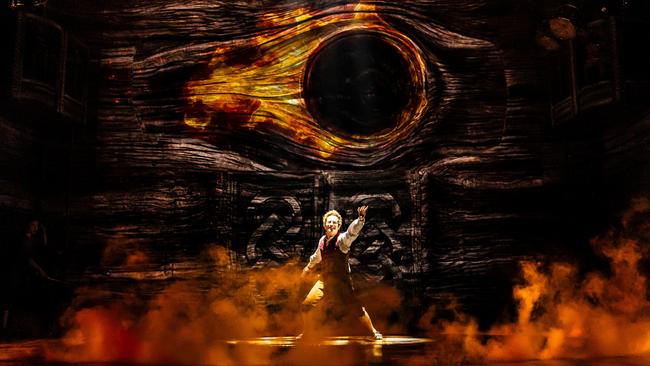
In a similar vein, Brookman is hoping LOTR “becomes a 20, 25-year project for us, not just in Australia but right the way through Asia, Europe, the US and around the world.. Because what we’ve found is that around the world, the market interest in the title is there.”
Hart is the unassuming director who has bravely filleted Tolkien’s 1200-page trilogy into a 2½-hour show and he is acutely aware that LOTR “is one of the most beloved stories ever told”. During a break from an intense week of technical rehearsals at the Shakespeare Theatre, he says that during the seven-week rehearsal period in Chicago he has barely had any time to explore the lakeside city or its flourishing theatre scene.
With a sly grin, Hart admits when he approached Wallace – who had been involved with an earlier $50m Lord of the Rings musical – with a plan to reconfigure that blockbuster for a 220-seat regional venue, he didn’t expect to get the green light.
“Not at all,” Hart says. “I was fairly conscious that it was a crazy idea.”
In Tolkien’s saga, Frodo is obliged to undertake his hazardous journey to the darkest realms of Mordor after he unexpectedly inherits a magic ring from his adopted uncle Bilbo. Similarly, Hart’s concept was stoked by an alarming development at the Watermill Theatre in Berkshire, where he is artistic director.
In 2022, Watermill lost all its government funding. This was part of a broader slashing of cultural funding by the previous Tory government and it left the respected theatre company’s staff “in deep shock”. The company could have gone into a defensive crouch and made deep cuts to its season; instead, Hart decided to go big by staging his version of LOTR: A Musical Tale.
“It was the most expensive production we’d ever done in the theatre,” he says, even though “we’d just lost all of our funding”.
Hart agrees this was “counterintuitive, but actually it worked really well for us because it brought in new audiences”. The season was extended and sold out, and “people literally flew in from around the world to see it”.
The director says the twin forces of the Covid pandemic – which initially afforded him time to work on the LOTR musical – “and losing funding really energised the whole thing because nothing could be done in the same way any more”.
The reviews for the Watermill show were flattering, with The Guardian awarding it four stars and describing it as a “spectacle of compression … (that) brings big rewards”. This, in turn, led to a sold-out 12-week season – the longest season for a single show in Watermill’s 57-year history.
Wallace, who has worked on productions of Cats, Phantom of the Opera and a Tony-nominated production of Jesus Christ Superstar, was a co-producer of the original LOTR musical that was staged in Toronto and London between 2006 and 2008. This was believed to be the first attempt to turn Tolkien’s trilogy into a stage musical and its $50m British budget made it the most expensive production in West End history to that point.
That blockbuster would go on to be nominated for five Olivier awards including best new musical. However, even by West End standards it was a behemoth; it required 17 hydraulic lifts, a cast of 65, an even bigger orchestra and crew, 500 costumes and 150 weapons. It divided critics and, already burdened with exorbitant production costs, its box-office sales were hit hard by the 2008 global financial crisis. In London it closed only 13 months after it opened. With elaborate understatement, Wallace concedes: “It was an expensive show in terms of its running costs.” In contrast, the veteran producer says the Watermill production that is bound for Australia has a pleasing “simplicity” and ingenuity – there is no live orchestra, while the orc battle scenes are depicted by a handful of performers.
On the other hand, as Frodo, Sam and their unlikely bunch of allies stumble from one fantastical land to the next, Wallace says the new production demonstrates “incredible sophistication in its use of contemporary technology, lighting, puppetry, sound and projection”.
The Watermill production has retained the same book, lyrics and music as the blockbuster: the story and lyrics are by Shaun McKenna (Maddie, La Cava) and Matthew Warchus (Groundhog Day), while its Bollywood-meets-Scandi folk score has been devised by Oscar winner AR Rahman (Slumdog Millionaire), Finnish band Varttina and Tony award-winner Christopher Nightingale (Matilda the Musical).
Review attended a Chicago preview that opened with the audience singing happy birthday to the hobbit Bilbo Baggins, who is celebrating his eleventy-first birthday in the Shire.
Halfway through the show, you hear a guttural voice and look up to find Gollum – the misshapen, Caliban-like creature played by Andy Serkis in the Jackson film trilogy – dangling from a rope in the auditorium. While the Sydney production will have an Australian cast, in Chicago Gollum is played by US actor Tony Bozzuto, who steals virtually all his scenes with his low, crablike movements, chalk-white hairless skull and strangulated singing and speaking voice.
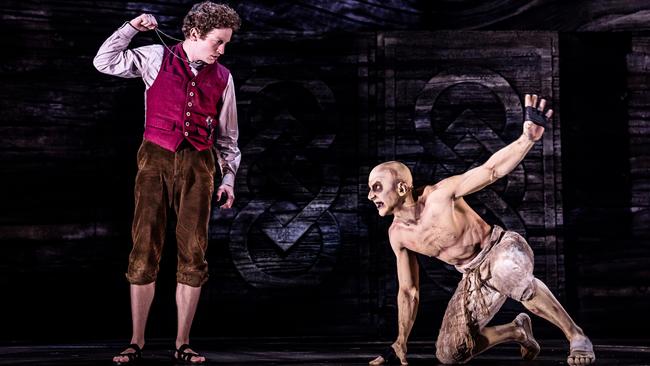
“To meet Gollum in the flesh in the theatre is a really extraordinary thing,” says Hart. All of this is part of the director’s philosophy of dismantling the theatre’s fourth wall and creating a musical that draws out the text’s humanity and intimacy.
Just one year after LOTR: A Musical Tale opened at the financially beleaguered Watermill, Hart and his British collaborators found themselves transplanted to one of America’s storied theatre companies, the Chicago Shakespeare Theatre. This unsubsidised company programs classical and contemporary plays and is an incubator of works that have gone on to be staged on Broadway. In fact, it helped to originate three productions currently playing on the Great White Way – Six, The Notebook and Illinoise.
Hart says he is “blown away” to be touring his production to the US, New Zealand and Australia – and he hopes his vision will appeal to fans of the books, films and video games, as well as those who are new to the saga.
“For me what was so important is that we tell the story in a way that works for all audience members,” he says.
On stage, as Frodo and Sam persevere with a dangerous mission they “land in” rather than choose, the parallels with the experiences of World War I soldiers were, for this reporter, quietly searing. (Tolkien fought in the Battle of the Somme.)
Initially set in the Shire, the hobbits’ rural idyll, Hart’s production also carries a clear environmental message: “I felt what Tolkien was expressing through the hobbits of the original books was an idealised version of ourselves,” says the director. “That sense of reconnecting to nature, manual working, pre-industrialisation is a way of thinking that he thought we were losing sight of. And that feels even more prevalent now.”
■ ■ ■
Middle-earth Enterprises holds the licence to all stage and motion picture productions of Tolkien’s trilogy and is also a co-producer of the Watermill musical.
The company’s brand and licensing steward, Fredrica Drotos, travelled to Chicago for the musical’s previews and opening night and says she found herself “in tears” because she found the finale so moving. When Review asks this custodian of one of the world’s most cherished fantasy brands why the company gave the thumbs up to Hart’s concept, she says its “humanity and intimacy” were irresistible “selling points”.
The San Francisco-based Drotos was also impressed by Simon Kenny’s set designs, including an expertly crafted wooden backdrop (evoking the Shire) with a large ring of woven willow, and by the choreography of Anjali Mehra that depicts everything from the menace of the warmongering orcs to the quaint, Morris-dancing-like traditions of the hobbits.
The film and gaming rights to LOTR were bought by Swedish gaming conglomerate Embracer Group in 2022, and Drotos likens the reimagined musical to “a game come to life. I think they (gamers) will love it”. The challenge for the producers, she says, is to “reach that audience and help them understand that the musical is just another expression of this world that they so appreciate”.
Brookman is also keen to reach LOTR’s gaming fans. The producer says casting for the Australian production has begun and that the show demands “really incredible” talent because of the requirement that the cast can sing, act, dance and play an instrument. “It’s sort of unique in that regard,” he says.
Also playing on Brookman’s mind is the fact the show that started out in a 220-seat regional venue will play in Sydney’s State Theatre – a venue almost 10 times that size. (In Chicago, the production was staged in a 750-seat theatre, the Yard, at the Shakespeare complex.) “It’s always a challenge when you go from a smaller space that has relied on ingenuity and audiences using their imagination, to then going up in scale,” Brookman reflects.
He reveals that before the pandemic, GWB was almost “set to go” with a LOTR stage production that was scuppered by Covid. That show veered more towards a play than a musical format. Then, amid the pandemic and a funding calamity, Hart’s version emerged. “The Watermill production really came out of nowhere. I am so pleased that it did because it’s genuinely beautiful,” Brookman says.
He reiterates his point that LOTR: A Musical Tale “resonates, I think, more than any show that we’ve been associated before across every market”.
While a live production cannot compete with the CGI effects used in Jackson’s epic films, Hart argues “there’s more to this story than the films. While so many people love the films, we’re trying to create a version that works for people who love the story in multifaceted ways.”
The Lord of the Rings: A Musical Tale opens at Sydney’s State Theatre on January 7, 2025. Rosemary Neill flew to Chicago with the assistance of GWB Entertainment.




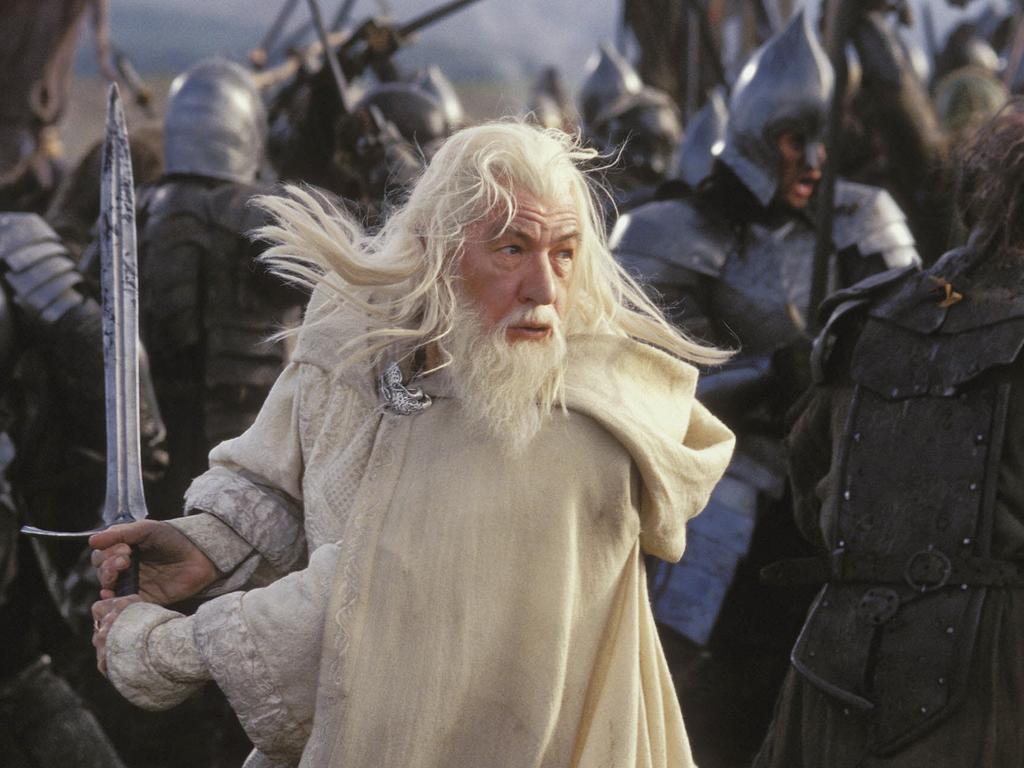
To join the conversation, please log in. Don't have an account? Register
Join the conversation, you are commenting as Logout